Provence
Copyright: Léonard Cotte/UnsplashProvence
Located in the southeast of France, Provence-Alpes-Côte d'Azur is a charming region celebrated for its beautiful coastline, with popular destinations like Nice and Saint-Tropez, as well as its spectacular natural scenery, ranging from the majestic French Alps to the awe-inspiring lavender fields. Provence boasts numerous historical landmarks, including the ancient Roman city of Arles and the Palais des Papes in Avignon. The region is also a hotspot for outdoor activities, such as skiing and hiking, and hosts renowned festivals, such as the Cannes Film Festival and the Avignon Theatre Festival.The Region
The region of Provence-Alpes-Côte d'Azur is more than just a picturesque destination in Southern France. It's a place where the past and present come together in a colourful blend of culture and history. The region's strategic location at the crossroads of several civilisations has left an indelible mark on its identity, from its architecture and cuisine to its art and traditions. In ancient times, this area was inhabited by Ligurian and Celtic tribes before being conquered by the Greeks and then the Romans. The Roman Empire left a lasting impact on the region, with impressive architectural feats such as the Pont du Gard and the Roman city of Arles. In the Middle Ages, Provence was ruled by various feudal lords and became a centre of trade and culture. In the 14th century, Avignon became the seat of the Catholic Church and the Palais des Papes was constructed, marking a period of great wealth and cultural flourishing. In the 18th and 19th centuries, Provence experienced economic growth through the textiles and soap production industries. The region also attracted artists such as Vincent van Gogh and Paul Cézanne, who were inspired by its natural beauty and vibrant culture. During World War II, Provence was occupied by Italy and later Germany. The ports of Marseille and Toulon were heavily bombed, but after the war, the region was reconstructed, and tourism thrived. Today, Provence-Alpes-Côte d'Azur still maintains its vibrant and lively character, boasting a rich cultural legacy and a profound sense of identity. It is France's most popular holiday destination, with six departments and numerous cities, including Nice, Avignon, Aix-en-Provence, Cannes, Antibes, Orange, and Marseille.Cities & Towns of Provence
Provence boasts a treasure trove of captivating cities and towns to explore, each with its own unique charm and allure. And with so many delightful destinations to choose from, deciding where to start can be a bit overwhelming. But fear not, for we have compiled a concise guide to help you uncover some of the must-visit cities and towns in this enchanting region.Do & See
From exploring its stunning lavender fields to skiing in the French Alps to wandering through its picturesque hilltop towns to rubbing elbows with the rich and famous in the French Riviera, there's definitely something for everyone in Provence. The Mediterranean climate is ideal for growing grapes, and wine enthusiasts will be delighted by the region's vineyards, which produce some of the finest wines in France. Visitors can also explore the region's ancient olive groves, learn about the history and production of olive oil, and even participate in tastings to discover the diverse flavours of this culinary treasure. The Côte d'Azur's beautiful coastline is another major draw, with glamorous cities such as Nice and Saint-Tropez offering sun, sea, and sand in abundance. Culture vultures will love exploring the region's historic landmarks and fascinating museums, such as Cézanne's Studio and the Vincent van Gogh Foundation.
Dining
The cuisine of the Provence-Alpes-Côte d'Azur region is known for its fresh and flavorful ingredients, which are influenced by the region's Mediterranean climate and proximity to the sea. It is strongly characterised by the use of olive oil, garlic, tomatoes, herbs, and seafood. Popular dishes include bouillabaisse (a fish stew), ratatouille (a vegetable stew), socca (a chickpea pancake), and pissaladière (a pizza-like dish with caramelized onions and anchovies). For those with a sweet tooth, you can try local treats such as honey, calissons (candies made from almonds and melon), chocolate mendiants, and quince paste. The wine region in Provence boasts an exceptional variety of wines due to the favourable climate and soil conditions. The region is especially known for its rosé wines, which pair perfectly with the local cuisine.
Cafés
While France may be more famous for its wine and cheese, the region's coffee scene is a hidden gem worth exploring. From quaint cafés in charming villages to chic espresso bars in trendy cities, coffee lovers will find plenty of options to satisfy their caffeine cravings. The region's coffee culture is influenced by both French and Italian traditions, creating a unique blend of flavours and brewing techniques. Whether you prefer a classic café au lait or a frothy cappuccino, the Provence-Alpes-Côte d'Azur region has something to offer for every coffee lover.
Bars & Nightlife
Provence caters to all kinds of nightlife preferences, whether you're looking for a relaxed evening with friends or a night filled with dancing and socialising. From intimate wine bars to large dance clubs, there's no shortage of options available to visitors seeking an unforgettable night out in the region. The after-dark offerings in Provence vary depending on the city or town you visit. Below is a brief summary of what to expect in some of the major cities in the region: Marseille is renowned for its vibrant nightlife, with the Vieux Port and Cours Julien districts being popular destinations for those seeking bars, clubs, and live music venues. The Old Town in Nice, known as Vieux Nice, provides an assortment of bars, pubs, and clubs, whereas Promenade des Anglais is a favoured beachfront spot featuring bars and nightclubs. Cannes, famous for its glamorous lifestyle, showcases a nightlife scene that reflects this with its upscale bars, nightclubs, and rooftop lounges. As a university town, Aix-en-Provence boasts a dynamic nightlife scene, especially in the Old Town where bars, pubs, and nightclubs abound, primarily catering to its student population. Finally, Avignon presents a more laid-back nightlife scene, with many bars and restaurants having outdoor seating and live music shows throughout the summer months.
Shopping
In Provence, visitors can enjoy an array of shopping opportunities, from high-end boutiques and luxury brands to colourful local markets and artisanal crafts. The region is home to many talented potters and ceramicists, who offer a variety of colourful and unique pottery pieces, such as bowls, plates, and vases. Additionally, Provence boasts a diverse selection of textiles, including tablecloths, napkins, and curtains that showcase traditional Provençal designs and colours. Explore the narrow streets of picturesque towns, such as Aix-en-Provence, and browse through shops selling lavender products, soaps, essential oils, and other regional specialities. In larger cities such as Nice, Cannes, and Marseille, you'll find designer shops, department stores, and large shopping centres. Lastly, Provence is also famous for its food markets, where visitors can taste and purchase local cheeses, honey, and olive oils.

 Copyright: Thomas Despeyroux/Unsplash
Copyright: Thomas Despeyroux/Unsplash
 Copyright: CC0 Public Domain/PxHere
Copyright: CC0 Public Domain/PxHere
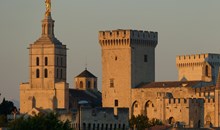 Copyright: falco/Needpix
Copyright: falco/Needpix
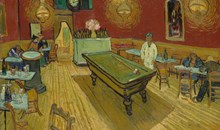 Copyright: Yale University Art Gallery/public domain/wikimedia
Copyright: Yale University Art Gallery/public domain/wikimedia
 Copyright: RikSchuiling/cc by-sa 3.0/Wikimedia
Copyright: RikSchuiling/cc by-sa 3.0/Wikimedia
 Copyright: FrDr/Wikimedia Commons
Copyright: FrDr/Wikimedia Commons
 Copyright: Tiia Monto/Wikimedia Commons
Copyright: Tiia Monto/Wikimedia Commons
 Copyright: Melody Temple/Unsplash
Copyright: Melody Temple/Unsplash
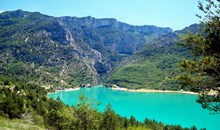 Copyright: Joseph Plotz/cc by-sa 3.0/Wikimedia
Copyright: Joseph Plotz/cc by-sa 3.0/Wikimedia
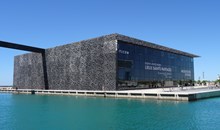 Copyright: CC0 Public Domain/Pxhere
Copyright: CC0 Public Domain/Pxhere
 Copyright: Benh LIEU SONG/cc by-sa 3.0/Wikimedia
Copyright: Benh LIEU SONG/cc by-sa 3.0/Wikimedia
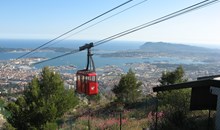 Copyright: Gfmorin/public domain/Wikimedia
Copyright: Gfmorin/public domain/Wikimedia
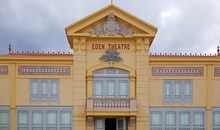 Copyright: Albert Labrède/cc by-sa 2.0/Wikimedia
Copyright: Albert Labrède/cc by-sa 2.0/Wikimedia
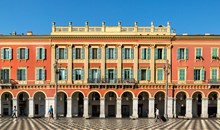 Copyright: Sheila Sund/Pxhere
Copyright: Sheila Sund/Pxhere
 Copyright: Camille Minouflet/Unsplash
Copyright: Camille Minouflet/Unsplash
 Copyright: Padrecardu/cc by-sa 3.0/Wikimedia
Copyright: Padrecardu/cc by-sa 3.0/Wikimedia
 Copyright: Andres Perez/Unsplash
Copyright: Andres Perez/Unsplash
 Copyright: Andrea Schaffer/cc by 2.0/Wikimedia
Copyright: Andrea Schaffer/cc by 2.0/Wikimedia
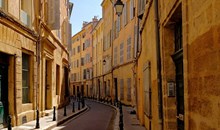 Copyright: djedj/Pixabay
Copyright: djedj/Pixabay
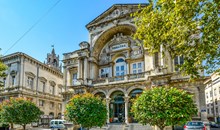 Copyright: CC0 Public Domain/Pxhere
Copyright: CC0 Public Domain/Pxhere
 Copyright: Robert Valette/cc by-sa 3.0/Wikimedia
Copyright: Robert Valette/cc by-sa 3.0/Wikimedia
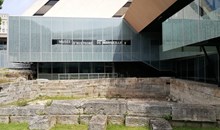 Copyright: Houss 2020/cc by-sa 4.0/Wikimedia
Copyright: Houss 2020/cc by-sa 4.0/Wikimedia
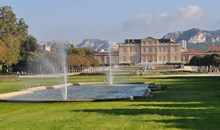 Copyright: Charliemoon/cc by-sa 3.0/Wikimedia
Copyright: Charliemoon/cc by-sa 3.0/Wikimedia
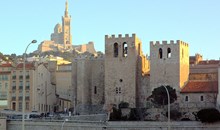 Copyright: Maxim Massalitin/cc by-sa 2.0/Wikimedia
Copyright: Maxim Massalitin/cc by-sa 2.0/Wikimedia
 Copyright: Cody Chan/Unsplash
Copyright: Cody Chan/Unsplash
 Copyright: Stefan Johnson/Unsplash
Copyright: Stefan Johnson/Unsplash
 Copyright: Blue moon in her eyes/cc by 2.0/Flickr
Copyright: Blue moon in her eyes/cc by 2.0/Flickr
 Copyright: Francisco De Legarreta C./Unsplash
Copyright: Francisco De Legarreta C./Unsplash
 Copyright: Davey Gravy/Unsplash
Copyright: Davey Gravy/Unsplash
 Copyright: Jason Leung/Unsplash
Copyright: Jason Leung/Unsplash
 Copyright: Tom Dillon/Unsplash
Copyright: Tom Dillon/Unsplash
 Copyright: Marika Sartori/Unsplash
Copyright: Marika Sartori/Unsplash
 Copyright: Jay Wennington/Unsplash
Copyright: Jay Wennington/Unsplash
 Copyright: Charlotte Harrison/Unsplash
Copyright: Charlotte Harrison/Unsplash
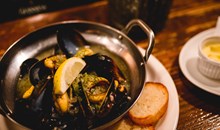 Copyright: Masaaki Komori/Unsplash
Copyright: Masaaki Komori/Unsplash
 Copyright: Julien Sarazin/Unsplash
Copyright: Julien Sarazin/Unsplash
 Copyright: sunorwind/Unsplash
Copyright: sunorwind/Unsplash
 Copyright: Clark Douglas/Unsplash
Copyright: Clark Douglas/Unsplash
 Copyright: Sebastian Coman Photography/Unsplash
Copyright: Sebastian Coman Photography/Unsplash
 Copyright: Nathan Dumlao/Unsplash
Copyright: Nathan Dumlao/Unsplash
 Copyright: JÉSHOOTS/Pexels
Copyright: JÉSHOOTS/Pexels
 Copyright: Fallon Michael/Unsplash
Copyright: Fallon Michael/Unsplash
 Copyright: Fahmi Fakhrudin/Unsplash
Copyright: Fahmi Fakhrudin/Unsplash
 Copyright: Delaney Van/Unsplash
Copyright: Delaney Van/Unsplash
 Copyright: Jasmin Schreiber/Unsplash
Copyright: Jasmin Schreiber/Unsplash
 Copyright: Cristiano Pinto/Unsplash
Copyright: Cristiano Pinto/Unsplash
 Copyright: Jay Gajjar/Unsplash
Copyright: Jay Gajjar/Unsplash
 Copyright: Matthieu Joannon/Unsplash
Copyright: Matthieu Joannon/Unsplash
 Copyright: Louis Hansel/Unsplash
Copyright: Louis Hansel/Unsplash
 Copyright: Gerrie van der Walt Hire/Unsplash
Copyright: Gerrie van der Walt Hire/Unsplash
 Copyright: Amie Johnson/Unsplash
Copyright: Amie Johnson/Unsplash
 Copyright: Colin Lloyd/Unsplash
Copyright: Colin Lloyd/Unsplash
 Copyright: Nedelko Dekovic/Unsplash
Copyright: Nedelko Dekovic/Unsplash
 Copyright: Drew Farwell/Unsplash
Copyright: Drew Farwell/Unsplash
 Copyright: Chris Bair/Unsplash
Copyright: Chris Bair/Unsplash
 Copyright: Kit Suman/Unsplash
Copyright: Kit Suman/Unsplash
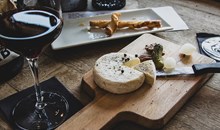 Copyright: Camille Brodard/Unsplash
Copyright: Camille Brodard/Unsplash
 Copyright: Nikola Đuza/Unsplash
Copyright: Nikola Đuza/Unsplash
 Copyright: Sara Kurfeß/Unsplash
Copyright: Sara Kurfeß/Unsplash
 Copyright: Kristina Balić/Unsplash
Copyright: Kristina Balić/Unsplash
 Copyright: Becca McHaffie/Unsplash
Copyright: Becca McHaffie/Unsplash
 Copyright: Christian Mackie/Unsplash
Copyright: Christian Mackie/Unsplash
 Copyright: Clark Street Mercantile/Unsplash
Copyright: Clark Street Mercantile/Unsplash
 Copyright: Marquise de Photographie/Unsplash
Copyright: Marquise de Photographie/Unsplash
 Copyright: Q/Unsplash
Copyright: Q/Unsplash
 Copyright: freestocks/Unsplash
Copyright: freestocks/Unsplash
 Copyright: Chris Barbalis/Unsplash
Copyright: Chris Barbalis/Unsplash
 Copyright: Eduardo Velazco Guart/Unsplash
Copyright: Eduardo Velazco Guart/Unsplash
 Copyright: Kevinbeets1995/cc by-sa 4.0/wikimedia (cropped)
Copyright: Kevinbeets1995/cc by-sa 4.0/wikimedia (cropped)
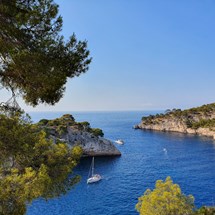 Copyright: Kenta Kariya/Unsplash
Copyright: Kenta Kariya/Unsplash
 Copyright: ConvertKit/Unsplash
Copyright: ConvertKit/Unsplash
 Copyright: why kei/Unsplash
Copyright: why kei/Unsplash
 Copyright: Waldemar/Unsplash
Copyright: Waldemar/Unsplash
 Copyright: Mariano Baraldi/Unsplash
Copyright: Mariano Baraldi/Unsplash
 Copyright: Wesley Hilario/Unsplash
Copyright: Wesley Hilario/Unsplash
 Copyright: Neven Krcmarek/Unsplash
Copyright: Neven Krcmarek/Unsplash